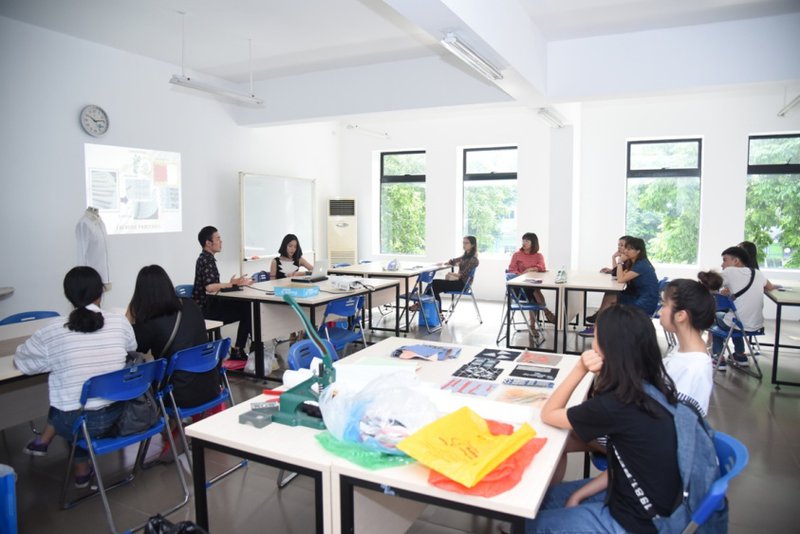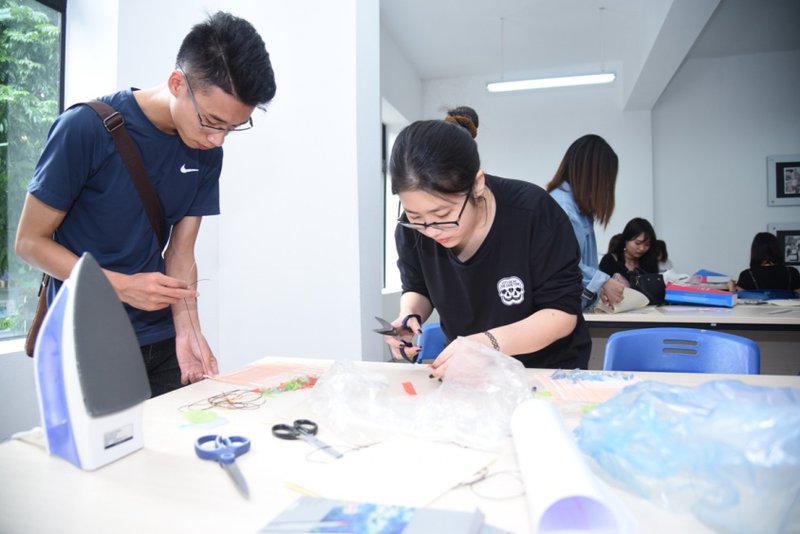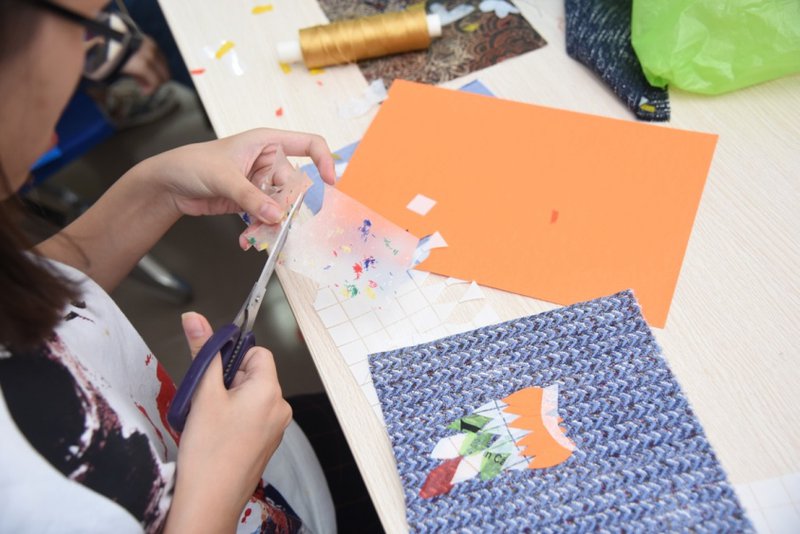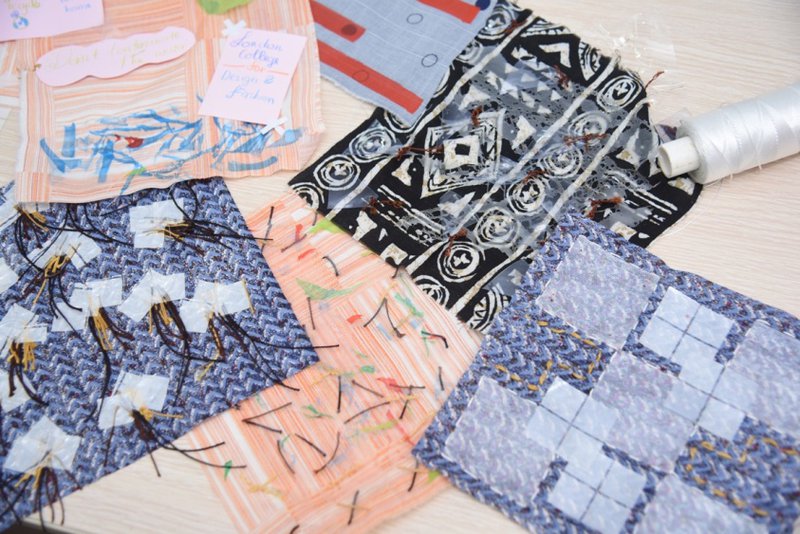Recycle Nylon: Creative ways to support sustainable design

- hang
- Oct. 31, 2017
There are many materials that can be used for design such as wood, fabric, metal etc., but nylon is considered to be one of the most materials to create an enormous amount of pollution every day. Designers have therefore aimed at recycling this specific type of material to not only diversify the products but also to protect the environment.
The recent workshop by the London College for Design & Fashion (Hanoi) has helped students to experience different ways to use nylons in their design.

Designer Nicky Vu and Gracie V (alumni at LCDF Hanoi) introduced how nylon can be harmful to our environment. This threat can be a disaster for people in the “sea of Nilon”.
Shocking statistics about Nylon (According to the report from United Nations Environment Program / Published online by the World Security, 22/03/2016)
Each second, there are 160,000 nylon bags are being used around the world.
Approximately 3.5 million tons of nylon are discharged per year.
If all of the nylon discharges are being tied together, we would have a rope that could wrap the Earth 4 times.
01 ton of nylon bags equal to 2.592 liters of crude oil.
01 nylon bag takes 20 – 1.000 years to be decomposed.
There are 46,000 pieces of nylon bag / 1.6 square kilometer ocean area.
There are approximately 94% of the birds in the North Ocean have nylon in their stomachs.

Students in the workshop are experiencing cutting the old nylon bags and used plastic bottles to create patterns and new materials on the fabric
Recycling nylons to protect the environment, students can apply their design in fashion, interior to make the products more creative and unique.

Designer Nicky Vu has shared his thoughts: “Throughout studies, many nylon bags have been made from pure petroleum in which will affect the soil and water when being landfilled and burning them on the other hand will produce toxic dioxin and furan poisoning which will in turn affect the endocrine, carcinogenicity and decrease immunity system. Through this workshop, we would like students to have a better awareness on the harmfulness of nylon to our lives, from starting to recycle or stop using nylon.

Designer Gracie V shared her view: “Designers are now aiming to protect the environment by recycling nylon in order to encourage customers’ behaviors and gain social support”.

Quynh Mai (student from Chu Van An Highschool) mentioned: This workshops are very simple but have done a great job in transferring an important matter of social significances. The most challenge thing is to think of the ideas on how to recycle nilon wastes.


Studying at the London College for Design & Fashion, students will have the chance to study a variety of methods that could be used for creative materials in their designs. These workshops have always been designed by professional teachers to inspire students throughout different topics.


